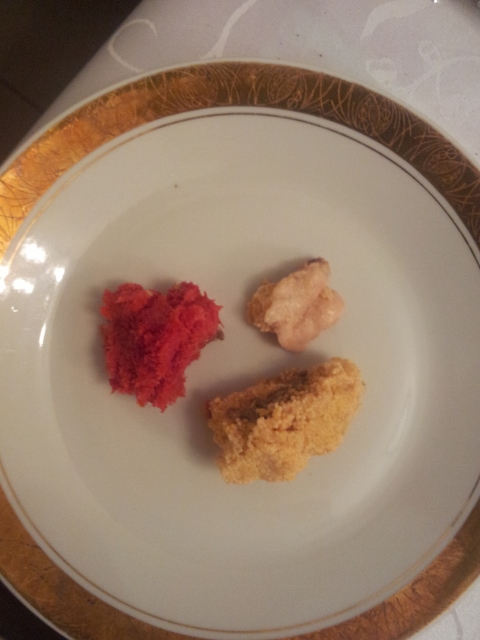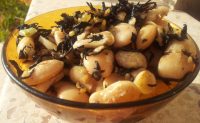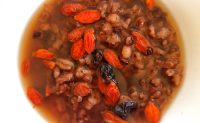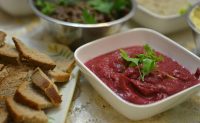Horseradish (Chrain)
By Eyal Shpringer

Horseradish is a traditional food item commonly included in the Passover “Seder” meal of Jewish families from Eastern Europe. My family views spicy horseradish as a symbol of culinary tradition and a dietary factor that stimulates our family members’ independent, vibrant, and argumentative nature.
Our family has several ways of using Passover horseradish (known as Chrain):
For the bravest and most robust members, we offer it in its raw form – as a piece of thoroughly chewed root (however, we don’t recommend trying this at home).
We grate white horseradish and add a little lemon juice for those who prefer a milder taste.
Finally, a classic version with beetroot and a squeeze of lemon is “for guests only.” This horseradish version is offered to new family members who are not yet accustomed to the intense flavor of raw horseradish and need some time to adapt and become initiated into our family’s culinary traditions.
To ensure the safety of our readers, we will provide a beginner-friendly recipe for making classic “Chrain” (horseradish condiment), but please note that all usage is at your own risk.
As part of the holiday meal, it is recommended to pair horseradish with fish and meat dishes. Its sharp, drying quality can aid in digesting these heavy foods and balance their sweetness and moistness.
Ingredients
- 100g horseradish root
- 100g fresh and well-washed beets
- Lemon juice to taste
Preparation
- Grate the beets using a thin grater and create a “pile” of grated beets.
- Grate the horseradish using the same thin grater.
- Place a handful of the grated horseradish into a jar, adding an equal amount of grated beets and lemon juice.
- Tightly close the lid of the jar and stir its content until all ingredients are mixed.
- Repeat until all the grated horseradish has been used up.
- Consume small portions at a time, careful not to open the jar too long.
Note: grating the horseradish with a grater is the most classic and recommended way by the older generation. The problem lies in the burning of the eyes accompanying the preparation process. Alternatively, a food processor or meat grinder can shorten the process.
Horseradish spread from traditional medicine point of view
The white color and bitter-sweet taste of horseradish indicate its association with the metal element. The pungent taste helps to stimulate the metal and wood organs: the liver, gallbladder, lungs, and colon.
Horseradish can aid in treating and preventing various respiratory diseases: sinusitis, respiratory allergies, hoarseness with phlegm, or cough. Horseradish may help with other diseases such as indigestion and lack of appetite, “cold” and “wet” urinary tract infections, poor peripheral blood flow, parasites, rheumatism, and gout.
Combining the spicy horseradish with the sour lemon and the sweet beetroot emphasizes the wood-earth-metal axis in the five-phase model of Chinese medicine, related to one’s ability to cope with daily life.
Eyal Shpringer, A Chinese medicine practitioner and a clinical herbalist specializing in Chinese nutrition and traditional nutritional approaches. Eyal holds a master’s degree in research of East Asian medicines. Since 2007 he has been teaching a postgraduate training program in the field of Chinese and oriental nutrition according to the TEF method and other courses and workshops for practitioners. Eyal co-authored the bestselling book Cooking for Life: A Traditional Nutrition Cookbook for Cancer Patients (Hebrew).
Did you find the recipe interesting? Do you want to continue studying with me?
You are invited to join me on my Instagram page and the Traditional Nutrition and Medicine Facebook group.


